Cassi and Kara, cousins with deep gardening roots, share their vegetable garden tips for creating a space that’s productive, sustainable, and fun season after season. Cassi, the Chemical Department Manager at Pete’s Greenhouse, and Kara both shared their practical tips and tricks for creating a garden that feeds families, fosters creativity, and makes gardening fun instead of overwhelming.
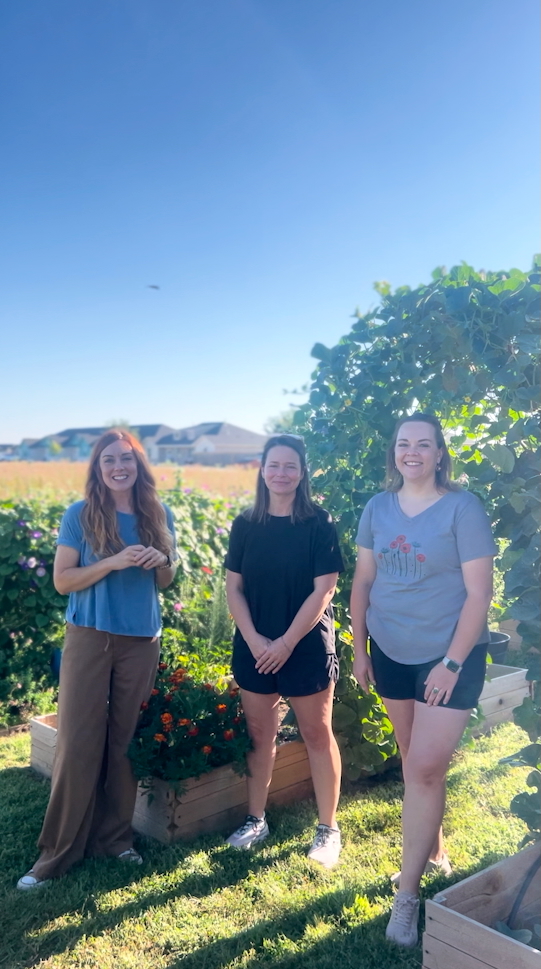
Crafting Memories with Gourds & Trellises
One of the highlights of their garden is the trellis system. Beyond simply supporting squash and cantaloupes, these trellises double as inspiration for future projects. Cassi and Kara plan to host a craft day, transforming birdhouse gourds into painted decorations or even musical shakers—an activity that connects them back to their mom, aunt, and uncle who once crafted with gourds. It’s a reminder that gardening isn’t just about food; it’s about family traditions and creativity.
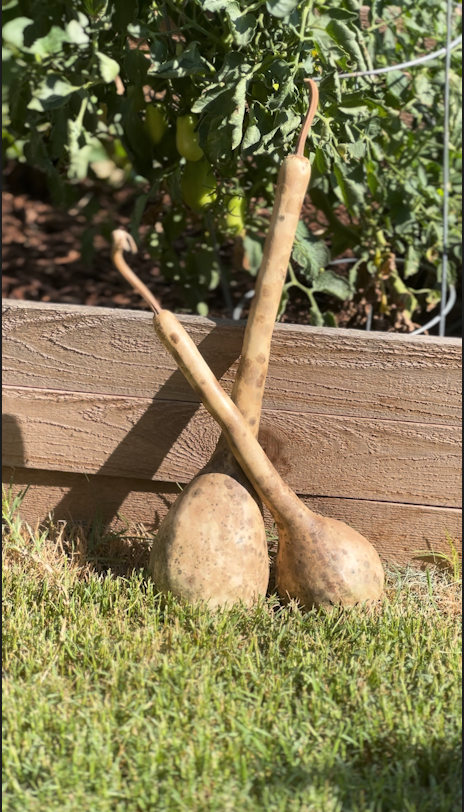
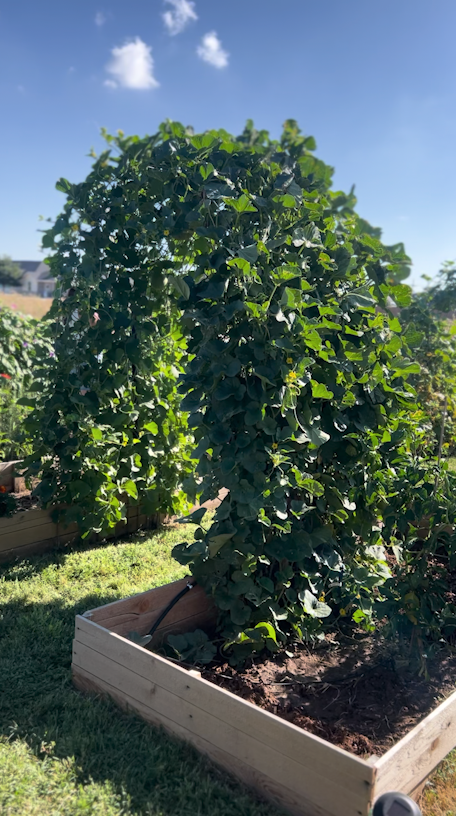
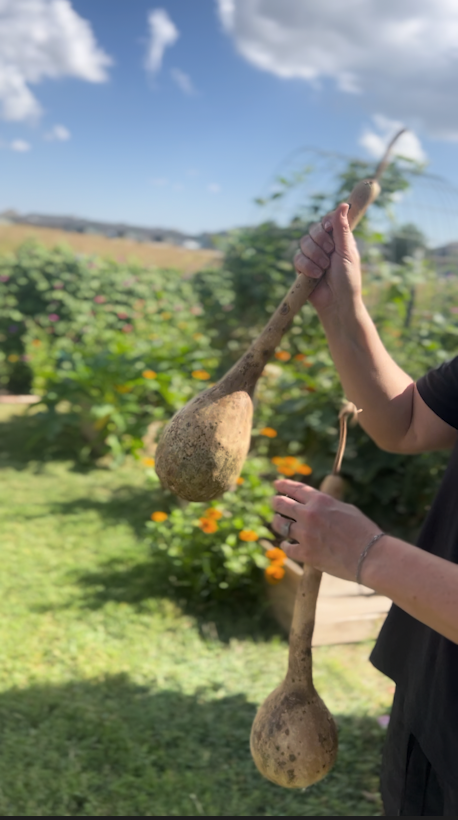
Lessons in Planting & Overcrowding
Like all gardeners, they’ve faced their fair share of planting challenges. This year, zucchini, purple basil, and tomato plants ended up overcrowded in the same raised bed, teaching them a valuable lesson: zucchini and tomatoes won’t be planted together again. They also experienced what they call “pepper gate.” What they thought were green chili plants turned out to be a mix of green chilis and banana peppers, many of which they didn’t want. Instead of settling, they pulled them and replanted with vegetables they actually enjoy eating. For Cassi and Kara, gardening is personal, you should grow what you and your family love. Their garden currently feeds three families and still provides enough extra to share generously with friends.
Sweet Cantaloupe & Resilient Trellises
Cantaloupe has been another rewarding crop for them. They’ve discovered that the best indicator of ripeness is when the melon naturally falls off the vine, though checking the tendril or color can also help. Initially worried about the trellis supporting the weight, they were impressed by the resilience of the vines themselves. The cantaloupes are not only sweet and delicious but proof that a trellis can do more than expected.
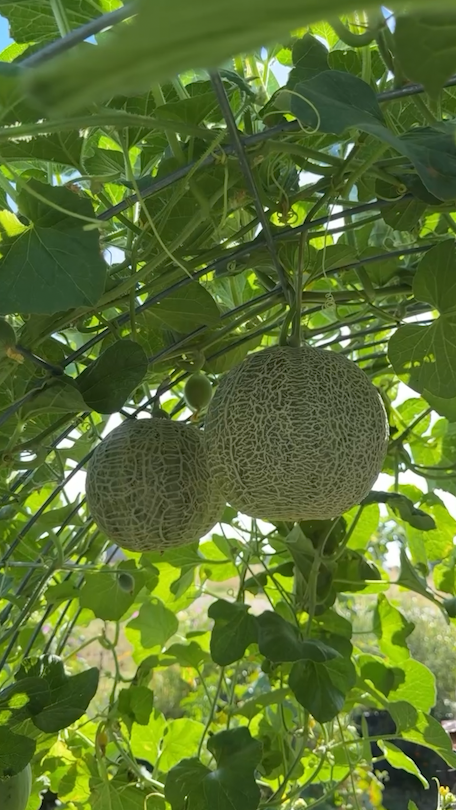
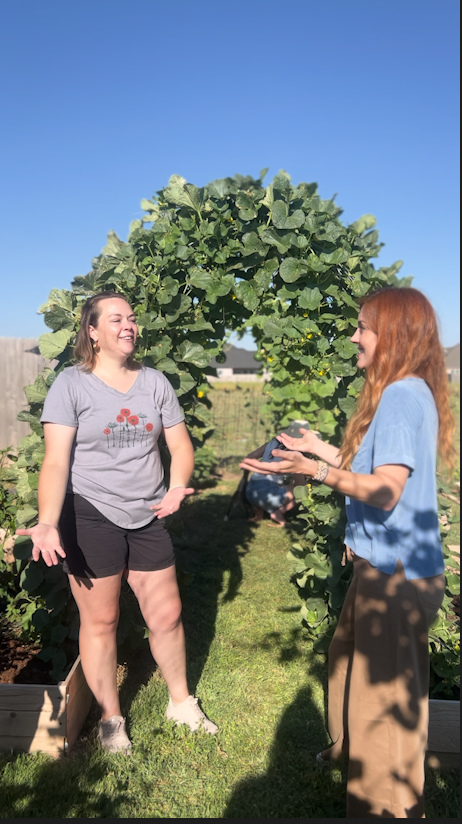
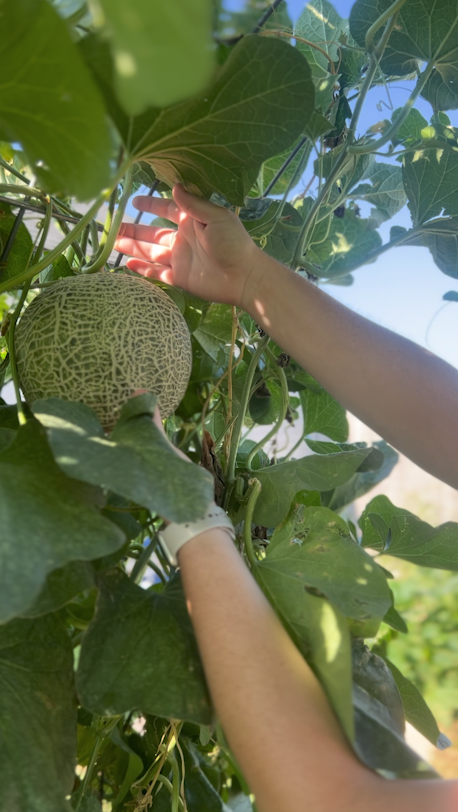
Extending the Season with Fall Planting
After pulling struggling pepper plants and tomatoes with leaf curl, they opened space for fall crops. They’ve added radish, dill (which is fast-growing and great for pollinators), Swiss chard, green onions, bush beans, and sweet snap peas. Their planting method is simple but effective: till the dirt, drop in the seeds, and top with a heavy layer of cedar mulch. The mulch helps retain moisture, withstand heat, and looks natural—all without the risks of dyed mulch. Cedar is their go-to because it decomposes well and is pest-resistant.
Flowers with a Purpose
Cassi and Kara’s garden is also a haven for flowers. Years ago, they scattered packets of zinnia seeds, and now the flowers return year after year without replanting. Alongside marigolds and morning glories, these blooms serve a vital purpose—they act as sacrificial plants, drawing pests like grasshoppers away from the vegetables. The morning glories climbing their fence have become a striking feature as well as a natural defense strategy.
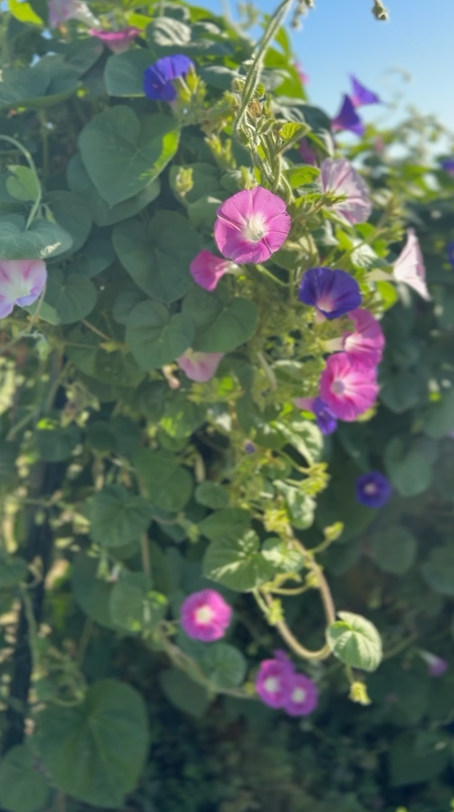
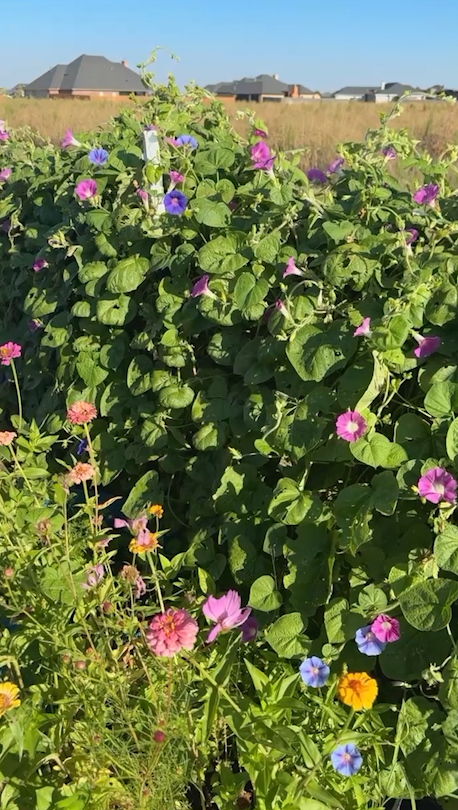
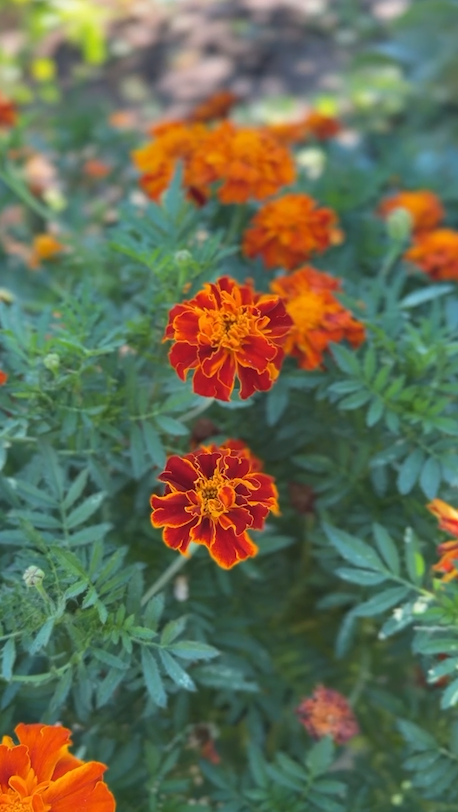
Herbs, Perennials, & Bug Control
One of Kara’s favorite areas is a bed along the fence filled with herbs like sage, rosemary, and oregano, mixed with wildflowers and a few struggling but resilient perennials. This herb border has been a game changer for bug control. Not only do herbs act as natural repellents, but their presence also seems to simplify pest management overall. Their dream is to eventually border the entire garden with herbs—both for practicality and beauty. Pollinators love this setup, visiting early and often thanks to Kara’s established perennial beds.
Dealing with Challenges: Powdery Mildew & Irrigation
Like many gardeners, they’ve battled powdery mildew, especially on cucumbers and squash. Instead of giving up, they treated it with a natural copper soap fungicide, which slowed its spread. While powdery mildew can be relentless, they focus on keeping it manageable while continuing to harvest plenty of cucumbers.
A big part of what makes their garden sustainable is their underground irrigation system. By burying tubing beneath the paths, they can mow between beds without issue and keep a reliable drip system running. The system is set to water nightly around 10 p.m. for 20–25 minutes, ensuring consistent hydration. This consistency allows them to leave for vacations without worrying about losing crops.
Soil Health & Continuous Learning
They emphasize that healthy soil is the foundation of everything. Their region’s soil isn’t naturally the best, so they work hard to amend it each season. Over time, it has become easier to maintain. This year, they went heavier on amendments, and their tomatoes are thriving like never before. Their advice is simple: you’ll make mistakes, but that’s part of learning. Gardening is about experimenting, adapting, and finding what works for you.
Corn, Watermelon, & Pumpkins
Cassi and Kara are still experimenting with corn, planting multiple varieties to see which does best. While bugs got to some, they still expect a freezer’s worth of corn. Their Iowa roots make corn an essential crop, and they’ve even tried blue corn. Though the first harvest wasn’t great, it provided seeds for future years. Alongside corn, watermelons are thriving, and they’re planning to try giant pumpkins next year. Their approach mixes practicality with fun—growing food while also looking forward to new challenges.
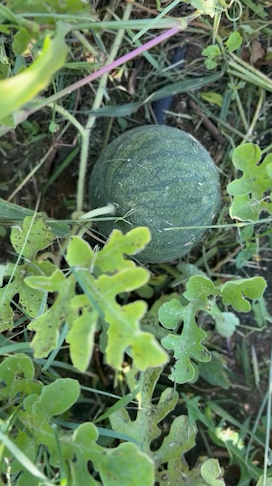
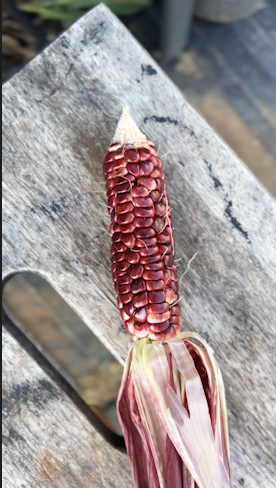
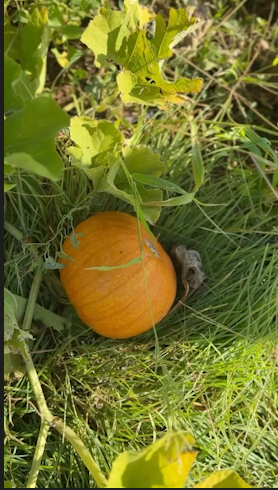
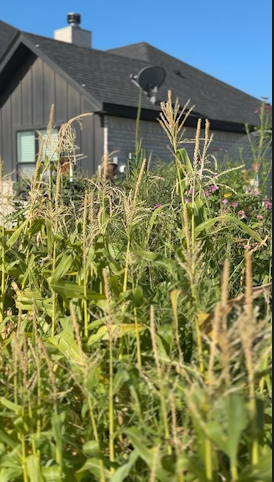
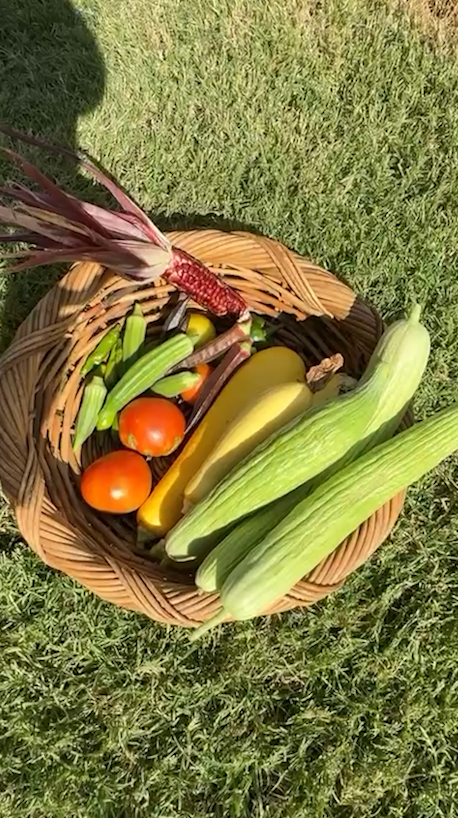
Pollinator-Friendly Plantings
Marigolds, lavender, violets, and fennel bring beauty, pollinators, and natural balance to the garden. Fennel, in particular, is planted for caterpillars and butterflies, even if it gets eaten quickly. These plants make the garden feel alive and full of movement.
A Garden Full of Joy & Respect
Above all, Cassi and Kara’s garden is a reflection of joy, family, and perseverance. It’s not just about food production but about creating a space where traditions continue, creativity flourishes, and nature thrives. Their approach shows that with a little planning, consistency, and willingness to learn, anyone can create a garden that feeds families, supports pollinators, and provides beauty all season long. As they put it, they’re not ready to rip everything out; they’re ready to keep it going and see what comes next.
To see more and watch the videos, follow along on Instagram, Facebook, or YouTube with the links below!
Facebook
No. 1 / No. 2 / No. 3 / No. 4
Instagram
No. 1 / No. 2 / No. 3 / No. 4
Youtube
Watch Here
We have also created our own Vegetable Planting Guide for Beginners to help you start growing with confidence! Happy growing!
Leave a Reply Cancel reply
workshop tickets
MON - SAT 9:00AM TO 6:00PM
Site Design by Hatched Studio
ABOUT PETE'S
GARDEN & GREENHOUSE
hOME & GIFTS
outdoor living
FIND US
7300 CANYON DRIVE
AMARILLO, TX 79119
806.352.1664
A Panhandle based gift shop and greenhouse. Passionately providing the feeling of home for 49 years.